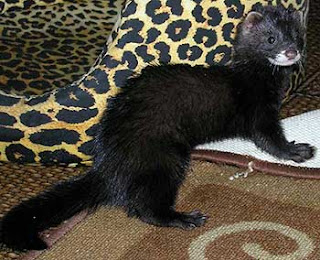 |
| Argiope lobata |
These spiders can be identified by their silvery abdomens that are ridged speckled with black. The males are quite small in size, measuring only 6mm. The females on the other hand, can reach up to 25mm and are more noticeably colored.
Argiope lobata, like all members of its genus, builds zig-zag patterned webs. They also build thicker white lines, called stabilimentum, into their webs. These lines help to camouflage the spider from prey, but also make the webs noticeable by larger animals (so that they don't get destroyed).
When it comes time to breed, the male spiders will build webs next to the females. After mating, the female will place her egg sac on the web, and this sac can contain as many as 1,400 eggs. Interestingly, the eggs hatch during the autumn months, but to stay warm the tiny spiderlings remain in the sac through winter, emerging when it is warm again in spring.
IUCN Status : Not Listed
Location : Africa, Europe, Asia
Size : Body length up to 6mm (males), 25mm (females)
Classification : Phylum : Arthropoda -- Class : Arachnida -- Order : Araneae
Family : Araneidae -- Genus : Argiope -- Species : A. lobata
Image : Ester InbarFamily : Araneidae -- Genus : Argiope -- Species : A. lobata
 RSS Feed
RSS Feed Twitter
Twitter 10:00
10:00
 booker2o73lister58
booker2o73lister58







































